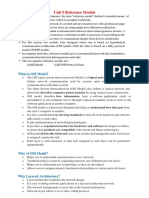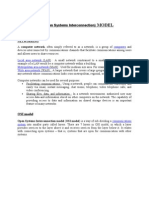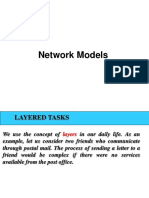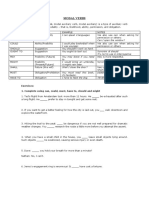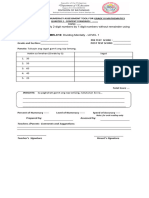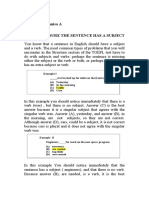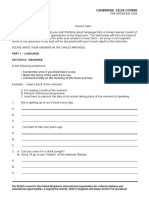0% found this document useful (0 votes)
10 views15 pagesChapter 2-Protocol and Architecture
Chapter 2 discusses protocols and architectures essential for data communication systems, emphasizing the importance of protocols for effective data exchange between devices. It outlines the characteristics, implementation, and key elements of protocols, as well as detailing the OSI and TCP/IP models, which structure the communication process into layered frameworks. Each layer in these models has specific functions and responsibilities, ensuring reliable data transfer and communication across networks.
Uploaded by
buomwuthot19Copyright
© © All Rights Reserved
We take content rights seriously. If you suspect this is your content, claim it here.
Available Formats
Download as PDF, TXT or read online on Scribd
0% found this document useful (0 votes)
10 views15 pagesChapter 2-Protocol and Architecture
Chapter 2 discusses protocols and architectures essential for data communication systems, emphasizing the importance of protocols for effective data exchange between devices. It outlines the characteristics, implementation, and key elements of protocols, as well as detailing the OSI and TCP/IP models, which structure the communication process into layered frameworks. Each layer in these models has specific functions and responsibilities, ensuring reliable data transfer and communication across networks.
Uploaded by
buomwuthot19Copyright
© © All Rights Reserved
We take content rights seriously. If you suspect this is your content, claim it here.
Available Formats
Download as PDF, TXT or read online on Scribd
/ 15































